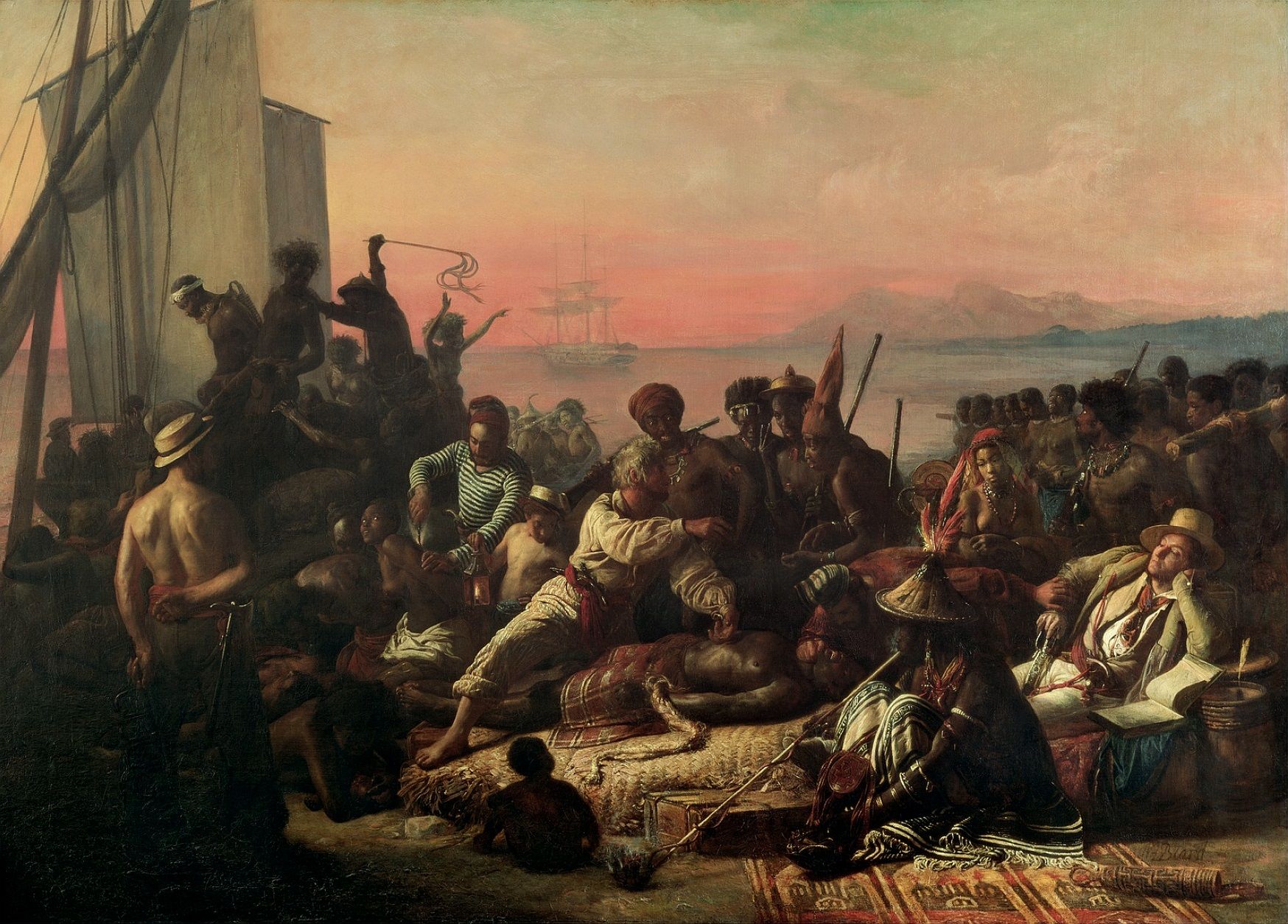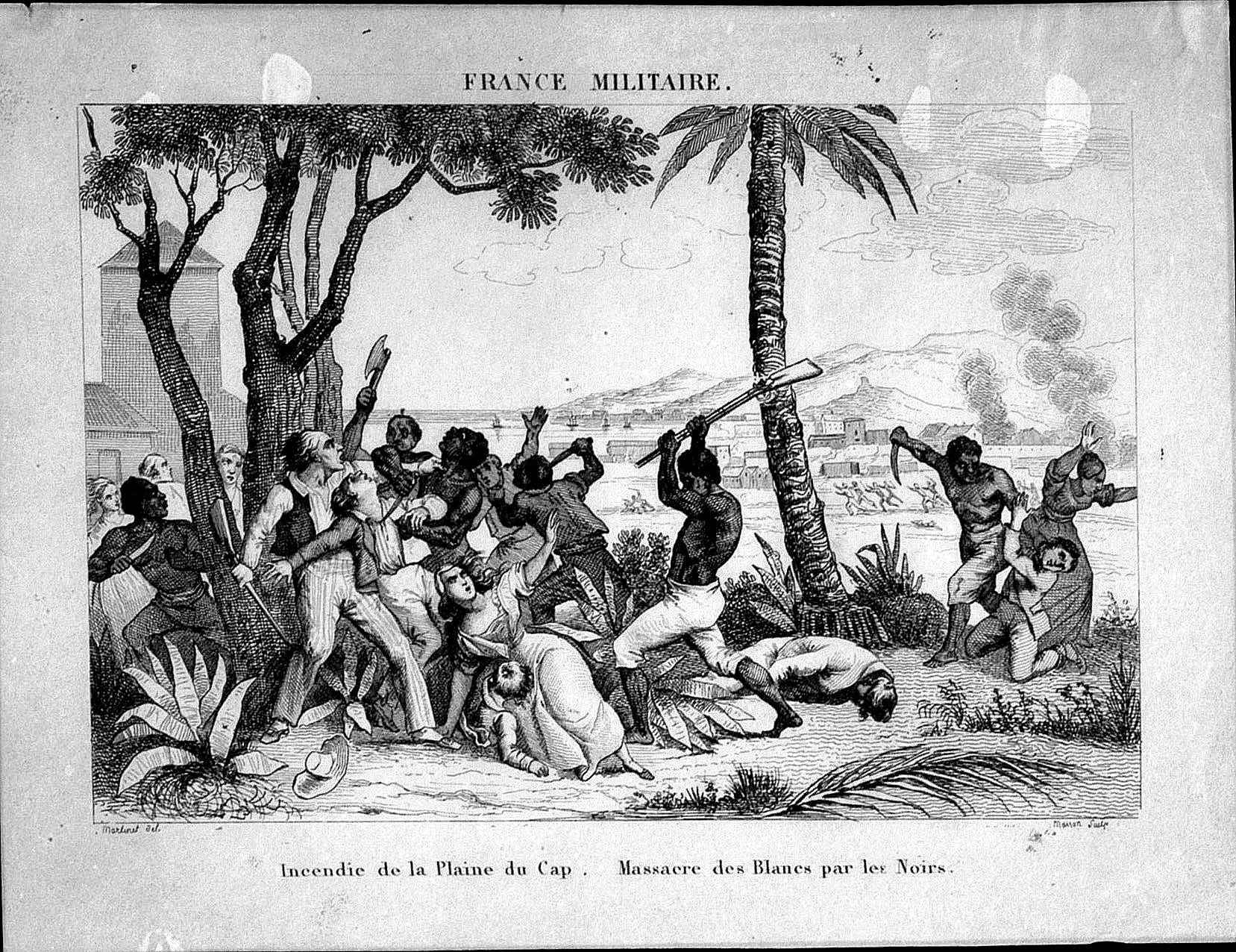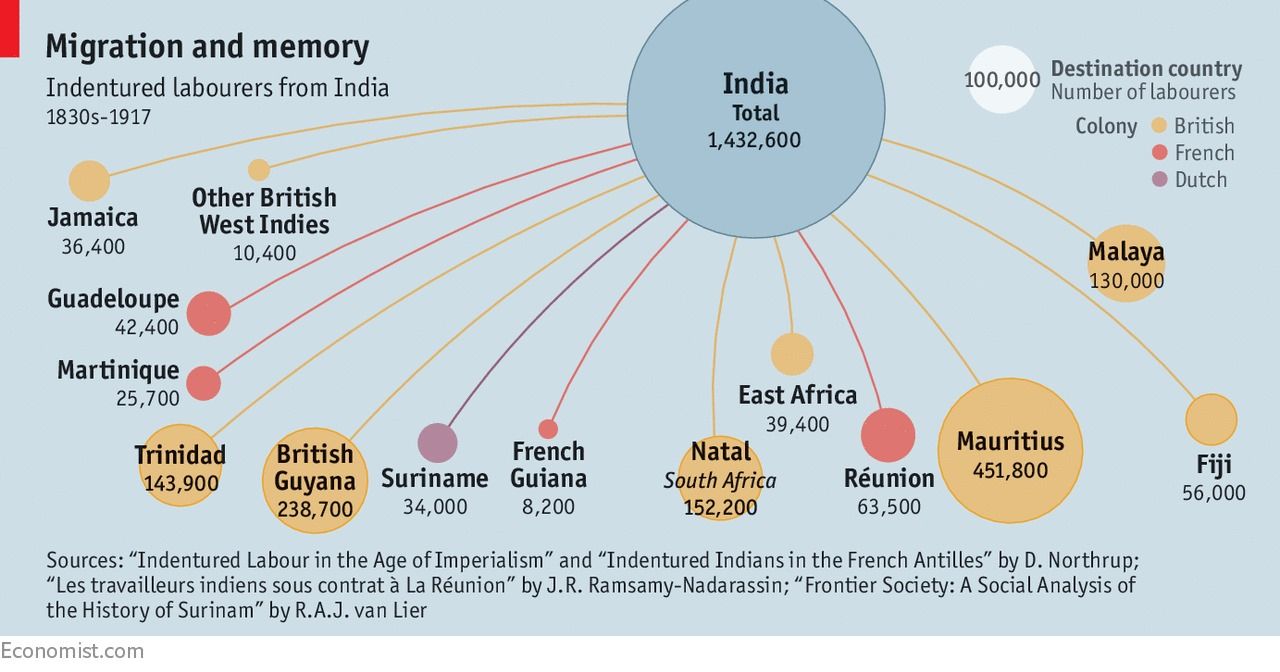Industrial Globalization & the Indian Indentured Labour of the 19th Century
The Industrial Revolution unleashed contradictory forces in the 19th century. On one hand, it necessitated intercontinental mass labour transit. On the other, and in combination with the French Revolution, it sounded the death knell for slave labour, the very basis of plantation prosperity. Indentured labour emerged to replace slaves. The lure of a better life pulled over a million Indians to European colonies in and around the three great oceans. Braving perilous voyages and horrendous work conditions, these indentured workers effectively built the foundation of the then European colonies. The system ended in 1917 but not before leaving its eternal mark on the global canvas.
Labour Question in the Contemporary Global Context
Winds no longer drove 19th century ships. Steam engines did. In doing so, the steamship propelled the first wave of globalization, releasing turbulent winds of change the world over.
The resultant economic, technological, political, cultural, and social interactions were complex, and forever transformed the worldwide movement of goods, labour, and capital.
It is in this backdrop that the question of Indian indentured labour originates.
Jamaican Sugar Plantation of 19th Century
Photograph Henri GEORGI, between 1879 and 1891
Cheap or slave labour was central to the success of plantations, which ran into thousands of acres and produced industrial cash crops.
How central?
Well, the obstruction of slave labour economics triggered the American Civil War (1861-65)! Such labour was also building infrastructure in the then European colonies.
Food Production in 19th Century Britain: A Representative Example
With her farms falling short of feeding her exploding population, Britain looked for cheap food imports. Vast land areas were cleared for farming in America, Russia, East Europe, and Australia. Low-paid labour became necessary to grow food here. And to build railroads and ports to transport it. Financing these operations required capital.
The same is true for other European colonizers. And for plantation crops viz. rubber, cotton, and sugar.
But with economic and political developments forcing Europeans into outlawing slavery and slave trade, plantation owners needed an alternative as former slaves refused to work as before. The answer was indentured labour.
The slave Trade (Slaves on the West Coast of Africa)
Painting by François-Auguste BIARD, circa 1833
Burning of the Plaine du Cap - Massacre of whites by the blacks
Print by MARTINET, sculpted by MASSON, 1833
Why Europeans Abolished Slavery - Economic & Political Factors
Unpaid slave labour was unfair competition for Britain’s industrialists who paid their workers. Plus, slave trade created instability in Africa, robbing these industrialists of business opportunities in the continent. This at a time when the industrialists’ star was rising. Now we know why Britain insisted on France halting her disguised slave trade in Africa if she wished to import Indian indentured labour from 1860 onwards!
Inspired by the French Revolution, slaves in Haiti, then the largest French plantation colony, revolted against slavery in 1791. Their success encouraged others. French colonies abolished slavery in 1794 and again in 1848, the Vienna Congress in 1815, British Empire in 1833, Dutch Empire in 1863, and the United States in 1865.
Yet another case of “When France sneezes, Europe catches cold,” as Austrian Chancellor Metternich observed in 1830! The freedom virus was in the air.
For about a century starting from 1830, almost 1.2 million Indian indentured labourers boarded ships for one of the 19 European colonies in and around the Indian, Atlantic, and Pacific Oceans, hoping to escape rampant famine and poverty in 19th century India.
Alas, the grass on the other side was not exactly green. In fact, it was strewn with lies, repression, disease, and death. Colonial authorities tried balancing the planters’ economic compulsions with labour welfare. But the latter took a backseat, almost invariably.
With the international cane sugar market in free fall in the early 20th century, the demand for indentured labour declined. The practice was already in the crosshairs of the budding Indian freedom movement. The First World War hit the final nail in its coffin, and the practice collapsed by 1917.
Not before leaving its everlasting imprint on the sands of global culture, economy, society, and . . . politics, of course.
Steam Engine: The Veritable Driver of the Industrial Revolution
If the need for mass transport created the necessity for globalization, it was the steam engine that facilitated it. Driving trains on land, and ships on seas, the engine enabled unprecedentedly large and fast movement of goods and people across enormous distances. Transport of labour and raw materials from distant lands to plantations and factories, and finished goods from factories to faraway markets was easier. Such connectivity sustained the colossal production capacities of factories, so necessary for the success of the Industrial Revolution!
Charles Algernon PARSONS' team turbine powered Turbinia at speed
Photograph by Alfred John WEST, 1897-1898
The Great Migrations
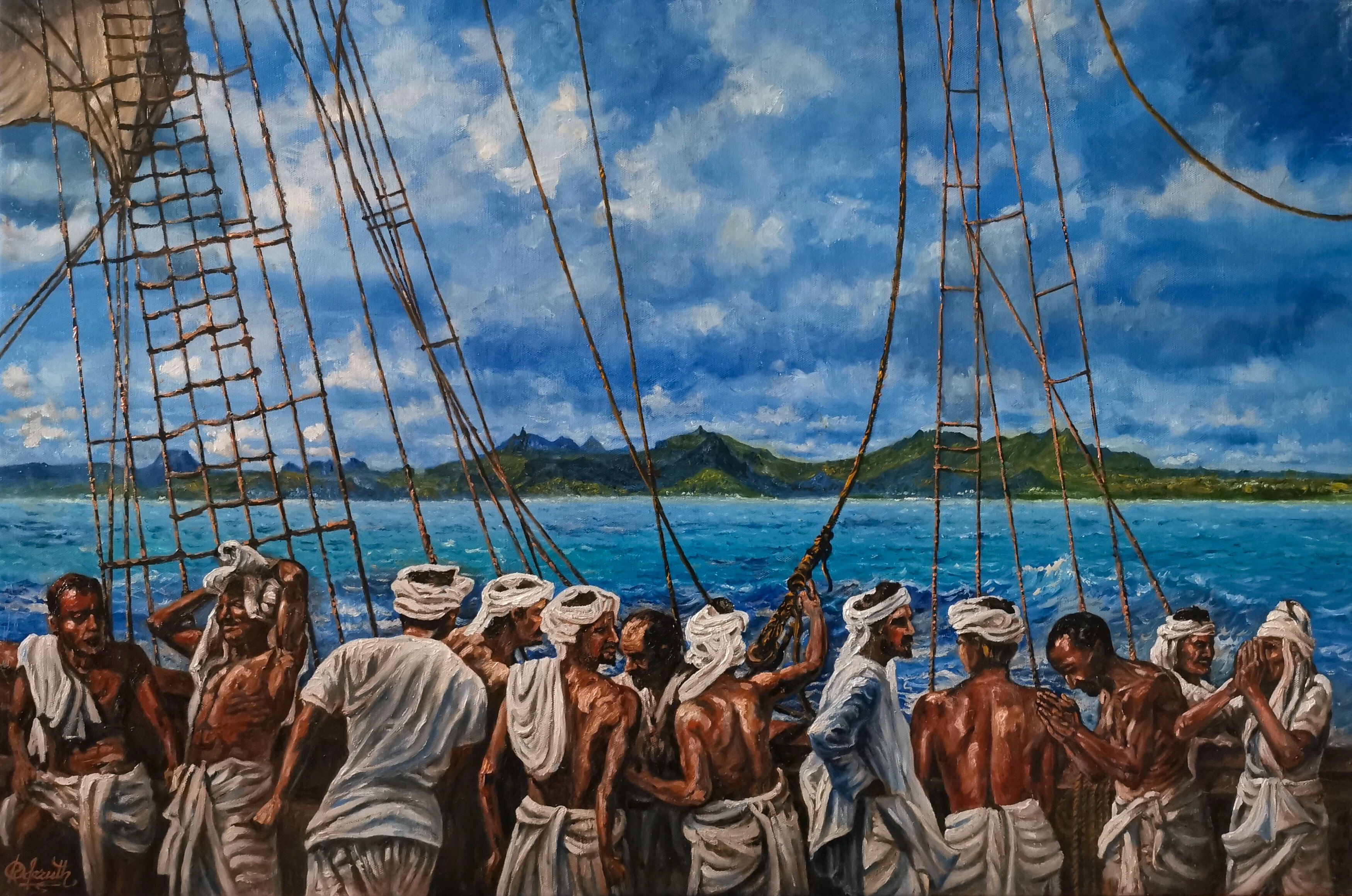
Image Credits: Rauf Oderuth. Retrieved from Wikipedia
Indenture is a contract.
Indentured labour works for a certain employer for a fixed duration, with or without salary. The system was derogatorily called coolie trade, coolie (kuli) being Tamil for salary or payment for menial tasks.
British success with indentured Indian labour in Mauritius roused the interest of other Europeans. French could officially import them from British India from 1860 via the Anglo French Treaty of Commerce (discontinued in 1882). The Dutch had to wait till 1862.
Neglected Area of Globalization?
Although the numbers and distances involved in the migration of labour from south, southeast, and east Asia to east and south Africa, the Caribbean, Australia, and the Americas were unprecedented, it receives lesser focus than the transatlantic slave trade and the movement of free European labour. Perhaps the first labour force of truly global character, these Asians served to build the foundation of 19th century European colonies.
Waiting eagerly were a million Indians. Droughts, floods, crop failures and other natural calamities apart, colonial policies of excessive land rents, food exports despite shortages, neglect of farming investment, and extra war taxes made life miserable. Decline of cottage industries, and land acquisition for plantations and mines further indebted many.
Indian Ports Involved in Indian Indentured Labour Migration in 19th Century
A Minority Named Voluntary Migrants
Not all relocation was distress migration. Chinese food shopkeepers and Indian textile sellers came in voluntarily to serve indentured labour on Reunion. Similar was the case of “Passenger Indians” in Natal, South Africa, the traders, teachers, artisans, and shop helpers from Gujarat who started arriving from 1869.
Reality Bites . . . Literally
Migrants are more influenced by the perception surrounding the destination, less by reality. As the indentured labourers soon realized. Recruiting agents promised one destination and delivered another. Atrocities, disease, and inhuman conditions aboard ships on the 10-20 week voyage killed hundreds.
Perception over Reality
“London’s streets, streets which they soon discover were not paved with gold” . . . from Samuel Selvon’s 1956 novel, The Lonely Londoners.
“They” are Caribbean immigrants to London in the post World War 2 era.

Exploitative work practices escalated the death rate in Jamaica (1870) and Mauritius (1900) to an astounding 12%! And, 7% Indian labourers died working on the Kenya-Uganda Railway in 1895-1902. So much so, it was infamously called the “lunatic line.”
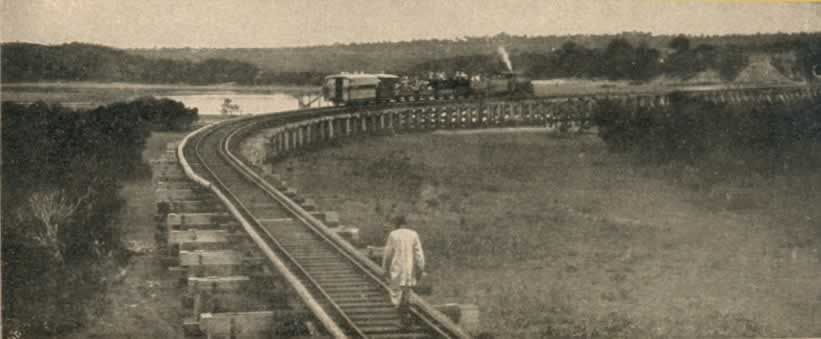
Lone Labourer (possibly) Walking on the Kenya Uganda Railway Line. Credits: Wikipedia
Next, planters pulled all stops to financially frustrate the labour into extending their stay:
- Recovered labourers’ voyage expenses from wages.
- Cut two days wages for one day leave (double cut).
- Lowered wages to settle plantation shop debt.
- Made return passage free only when claimed within a deadline.
- Extended contracts from 5 to 10 years for vagrants.
Slaves Vs Indentured Labour
Indentured labour could freely marry, own property, follow religion, and trade. Slaves couldn’t. Neither could they travel without their master’s permission, or assemble with slaves from other plantations. Travel and assembly rights of indentured labour were similarly restricted. Indentured labour had to carry an ID-type booklet with their names and employment history; and show it when detained.
The fact that Reunion imported rice to feed indentured labour underlines the difference. Earlier, slaves had to make do with locally grown maize. Then again, African slaves in Trinidad couldn’t practice their culture, Indian indentured labourers could.
Too Far East is West & the Cultural Bridge
In their selfish anxiety to retain experienced labour with about-to-expire indentures, planters induced them with land grants. Five acres and £5 in Trinidad, for example. Many such lands were barren. And, land grants were often part of the contractual “freedom dues” for labourers. Planters honoured these only when forced by circumstances.
To be fair to planters, some labourers took the £5 and disappeared. But it was land ownership, via grants and purchases made from savings, that blessed indentured labourers with social mobility. This also became the foundation for their permanent settlement. In Trinidad and Mauritius, and elsewhere. The wheel does come a full circle, eventually.
How worth is the £5 nowadays ?
2 approaches :
- Between 1717 and 1945, Britain maintained gold price at £4.25 per ounce. £5 would buy 1.18 ounces of gold. At present, gold is worth about £1550 per ounce. 1.18 ounces will be worth £1829. (source, source)
- Purchasing power of pound has multiplies 157.26 times since the year 1900. £5 x 157.26 = £786.3. (source)
Class evolves when experiences, values, and traditions create similar socio-political interests for certain groups. Indians in Trinidad retained their culture via language, dress, and festivals. This prevented their westernization, which most African slaves of the era had no choice but to confirm. The same is roughly true for Indians in other colonies.
And thus evolved colony-specific cultures. With limited similarity to the one in mainland India, this hybrid lifestyle was also markedly different from the Western and African culture.







